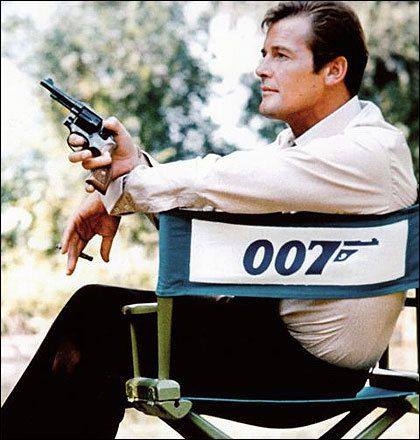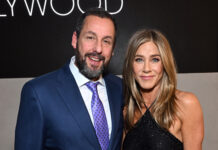In Memoriam “Bond..James Bond… Has Died” By Paul Vetrano .. I am saddened to inform you that Sir Roger Moore Has Passed at age 89 years…
Sir Roger George Moore KBE ( 14 October 1927 – 23 May 2017) was an English actor. He was the third actor to play the British secret agent James Bond in seven feature films between 1973 and 1985 and Simon Templar in The Saint between 1962 and 1969. Sir Roger Moore died on 23 May 2017 losing the battle with cancer. My small tribute….to an amazing actor and Knight.
My small tribute….to an amazing actor and Knight.
Early life
Roger Moore was born on 14 October 1927 in Stockwell, London. He is the only child of Lillian “Lily” (née Pope), a housewife, and George Alfred Moore, a policeman. His mother was born in Calcutta, India, of English origin. He attended Battersea Grammar School, but was evacuated to Holsworthy, Devon, during World War II and attended Launceston College school. He was then educated at Dr Challoner’s Grammar School in Amersham, Buckinghamshire. He then attended the College of the Venerable Bede at the University of Durham, but did not graduate.  At 18, shortly after the end of World War II, Moore was conscripted for national service. On 21 September 1946, he was commissioned into the Royal Army Service Corps as a second lieutenant. He was given the service number 372394. He eventually became a captain, commanding a small depot in West Germany. He later looked after entertainers for the armed forces passing through Hamburg.
At 18, shortly after the end of World War II, Moore was conscripted for national service. On 21 September 1946, he was commissioned into the Royal Army Service Corps as a second lieutenant. He was given the service number 372394. He eventually became a captain, commanding a small depot in West Germany. He later looked after entertainers for the armed forces passing through Hamburg.
Immediately prior to his national service, he studied for two terms at the Royal Academy of Dramatic Art, during which his fees were paid by film director Brian Desmond Hurst, who also used Moore as an extra in his film Trottie True. At RADA, Moore was a classmate of his future Bond costar Lois Maxwell, the original Miss Moneypenny. Moore chose to leave RADA after six months in order to seek paid employment as an actor. His film idol was Stewart Granger. At the age of 17, Moore appeared as an extra in the film Caesar and Cleopatra (1945), meeting his idol on the set. Later Moore and Granger were both in The Wild Geese (1978), though they had no scenes together.  Career
Career
Early work (1945–1959)
In the early 1950s, Moore worked as a model, appearing in print advertisements for knitwear (earning him the amusing nickname “The Big Knit”), and a wide range of other products such as toothpaste – an element that many critics have used as typifying his lightweight credentials as an actor. In his book Last Man Standing: Tales from Tinseltown, Moore states that his first television appearance was on 27 March 1949 in The Governess by Patrick Hamilton, a live broadcast (as usual in that era), and he played the minor part of Bob Drew. Other actors in that show included Clive Morton and Betty Ann Davies.
MGM
Although Moore signed a seven-year contract with MGM in 1954, the films that followed were not successes and, in his own words, “At MGM, RGM (Roger George Moore) was NBG [no bloody good].” He appeared in Interrupted Melody—billed third under Glenn Ford and Eleanor Parker—a biographical movie about an opera singer’s recovery from polio. That same year, he played a supporting role in The King’s Thief starring Ann Blyth, Edmund Purdom, David Niven and George Sanders.  In the 1956 film Diane, Moore was billed third again, this time under Lana Turner and Pedro Armendariz in a 16th-century period piece set in France with Moore playing Prince Henri, the future king. Moore was released from his MGM contract after only two years following the critical and commercial failure of Diane.
In the 1956 film Diane, Moore was billed third again, this time under Lana Turner and Pedro Armendariz in a 16th-century period piece set in France with Moore playing Prince Henri, the future king. Moore was released from his MGM contract after only two years following the critical and commercial failure of Diane.
“James Bond films”
Because of his commitment to several television shows, in particular the long-lasting series The Saint, Roger Moore was unavailable for the James Bond franchise for a considerable time. His participation in The Saint was not only as actor, but also as a producer and director, and he also became involved in developing the series The Persuaders!. Although, in 1964, he made a guest appearance as James Bond in the comedy series Mainly Millicent, Moore stated in his autobiography My Word Is My Bond (2008) that he had neither been approached to play the character in Dr. No, nor does he feel that he had ever been considered. It was only after Sean Connery had declared in 1966 that he would not play Bond any longer that Moore became aware that he might be a contender for the role. However, after George Lazenby was cast in 1969’s On Her Majesty’s Secret Service and Connery played Bond again in Diamonds Are Forever (1971), Moore did not consider the possibility until it seemed abundantly clear that Connery had in fact stepped down as Bond for good.
At that point Moore was approached, and he accepted producer Albert Broccoli’s offer in August 1972. In his autobiography Moore writes that he had to cut his hair and lose weight for the role. Although he resented having to make those changes, he was finally cast as James Bond in Live and Let Die (1973).
After Live and Let Die, Moore continued to portray Bond in The Man with the Golden Gun (1974); The Spy Who Loved Me (1977); Moonraker (1979); For Your Eyes Only (1981); Octopussy (1983); and A View to a Kill (1985).
Moore is the longest-serving James Bond actor, having spent 12 years in the role (from his debut in 1973, to his retirement from the role in 1985), having made seven of the Eon Production Bond films in a row. Moore is the oldest actor to have played Bond – he was 45 in Live and Let Die (1973), and 58 when he announced his retirement on 3 December 1985.
Moore’s Bond was very different from the version created by Ian Fleming. Screenwriters like George MacDonald Fraser provided scenarios in which Moore was cast as a seasoned, debonair playboy who would always have a trick or gadget in stock when he needed it. This was designed to serve the contemporary taste of the 1970s. Moore’s version of Bond was also known for his sense of humour and witty one liners, but also a skilled detective with a cunning mind.
In 2004, Moore was voted ‘Best Bond’ in an Academy Awards poll, and he won with 62% of votes in another poll in 2008. In 1987 he hosted Happy Anniversary 007: 25 Years of James Bond.
R I P















